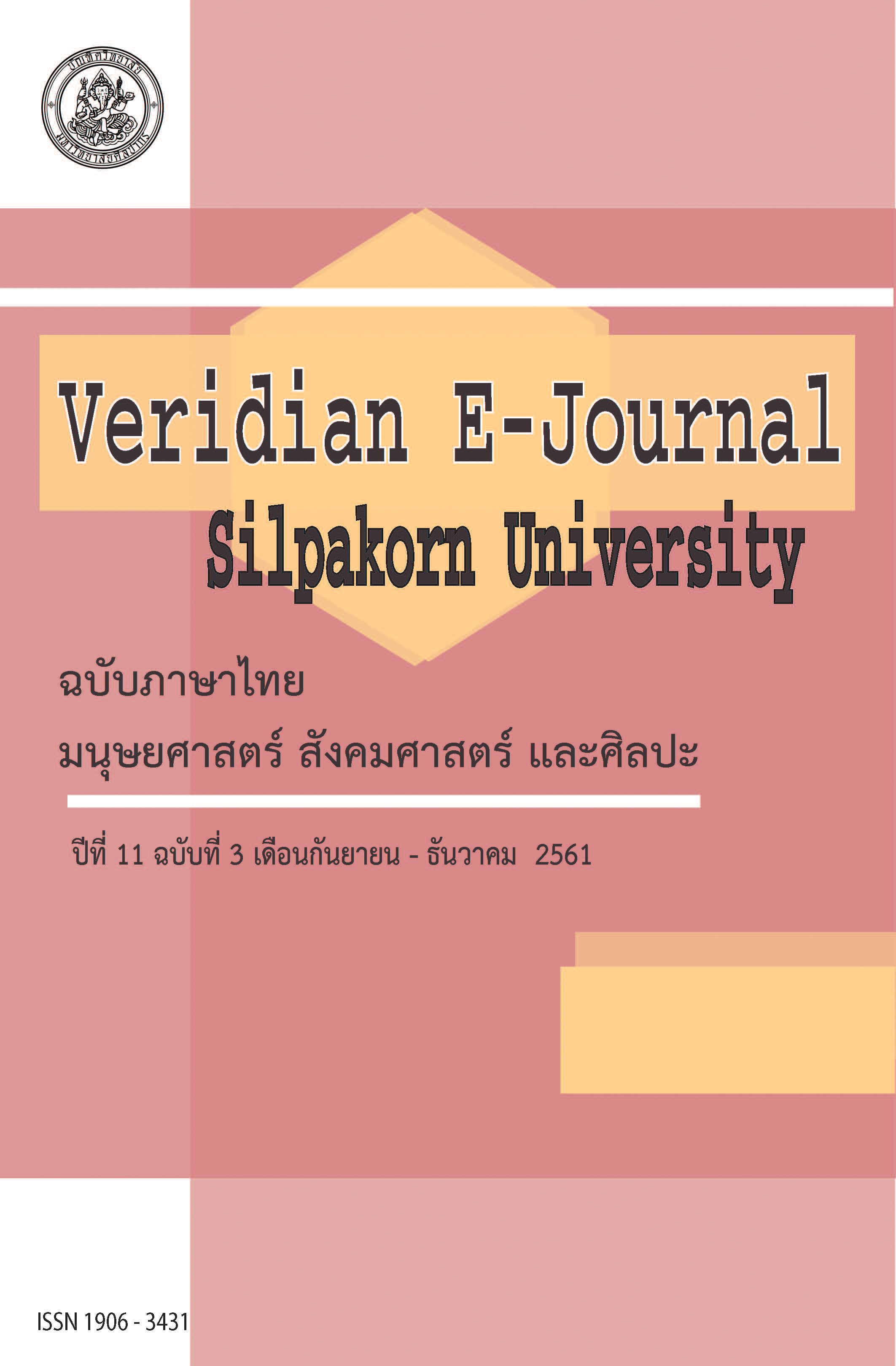ภูมิศาสตร์การท่องเที่ยว กรณีศึกษาอุทยานธรณีเย่หลิวประเทศไต้หวัน (Tourism Geography: A case study of Yehliu Geopark, Taiwan)
Main Article Content
บทคัดย่อ
บทความวิชาการนี้มีวัตถุประสงค์เพื่อนำเสนอข้อมูลแหล่งท่องเที่ยวทางธรรมชาติ เน้นไปที่การท่องเที่ยวเชิงธรณีวิทยาในพื้นที่อุทยานธรณีเย่หลิวประเทศไต้หวัน โดยใช้แนวคิดทางภูมิศาสตร์การท่องเที่ยวของสตีเฟ่น วิลเลี่ยม (Stephen Williams) เป็นพื้นฐานในการวิเคราะห์ ซึ่งได้อธิบายตำแหน่งที่ตั้ง ลักษณะทางภูมิศาสตร์ ภูมิลักษณ์อันเกิดจากตัวการทางธรรมชาติบริเวณแหลมเย่หลิว ทั้งนี้ได้วิเคราะห์ปัจจัยที่มีอิทธิพลต่อการพัฒนาเชิงพื้นที่และการจัดการท่องเที่ยวเชิงธรณีวิทยาที่ประสบความสำเร็จของอุทยานธรณีเย่หลิว พบว่าประกอบไปด้วย 5 ปัจจัยหลัก คือ 1) ปัจจัยทางกายภาพและลักษณะของพื้นที่บริเวณอุทยานธรณีเย่หลิวเป็นแบบเปิดสามารถพัฒนาต่อยอดในการเข้าถึงได้อย่างสะดวกเหมาะสม 2) ปัจจัยทางธรรมชาติของทรัพยากรการท่องเที่ยวที่มีความดึงดูด มีภูมิประเทศที่มีเอกลักษณ์ที่ทำให้เกิดความแปลกตาและน่าสนใจนำไปสู่การดึงดูดเชิงสถานที่ได้ 3) ปัจจัยที่เกี่ยวข้องกับการวางแผนพัฒนาพื้นที่อุทยานธรณีอย่างมีส่วนร่วม รวมไปถึงนโยบายสนับสนุนของทางภาครัฐและเอกชนอย่างต่อเนื่อง 4) ปัจจัยที่เกี่ยวข้องกับการบริหารจัดการเชิงพื้นที่อย่างเป็นระบบ และมีความเป็นอิสระ และ 5) ปัจจัยที่เกี่ยวข้องกับการสนับสนุนตลาดการท่องเที่ยว ที่ทางภาครัฐและเอกชนตลอดจนคนในพื้นที่ที่มีส่วนได้ส่วนเสียพยายามร่วมมือกันเพื่อทำให้เกิดแฟชั่นหรือกระแสการท่องเที่ยวบนหมุดหมายสถานที่ท่องเที่ยวน่าไปของประเทศ ความสำเร็จของการท่องเที่ยวเชิงธรณีที่อุทยานธรณีเย่หลิวจึงสะท้อนกระบวนการจัดการท่องเที่ยวและการบูรณาการผสมผสานได้อย่างน่าสนใจ แต่ประเด็นที่กล่าวมาข้างต้นมาพร้อมกับปัญหาเชิงนิเวศวิทยาที่เปลี่ยนแปลงลักษณะทางกายภาพและท้าทายแนวคิดการจัดการท่องเที่ยวบนฐานความยั่งยืน
This article aims to present the information about natural attractions with a special focus on the geotourism in Yehliu Geopark in Taiwan, using Stephen Williams’ Geography Tourism concept as the theoretical framework for analysis. It explains the location, the geographical features, and the landform caused by the natural agents around Yehliu cape. The article also analyzes the factors influencing the area – based development and the successful management of its geotourism. The result reveals that there are five major factors responsible for this: (1) the physical factors and the feature of the geopark area are open, making it easy to further develop the area’s accessibility; (2) the natural factors related to its tourism resources, which are attractive and boast of its unique geography, arouse curiosity and interest; (3) the factors related to the inclusive area development plan for the geopark as well as the state’s and the private sector’s continuous supportive policies; (4) the factors associated with the systematic and automous spatial management; and (5) the factors related to the support for tourism market, collectively given by the state, public sector, as well as the local stakeholders, in order to set the trend for the tourism in the area in such a way that makes it one of the destinations on the popular tourist map of the country. The success of the geotourism in Yehliu geopark is reflective of the process of tourism management and the attractive integration. However, the success mentioned above comes with the ecological problems that have altered the geopark’s physical features and have also challenged the concept of sustainable tourism management.

